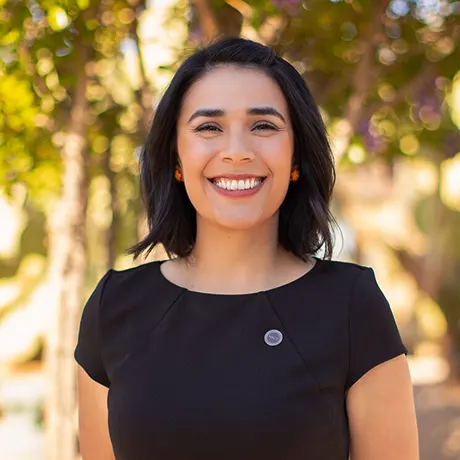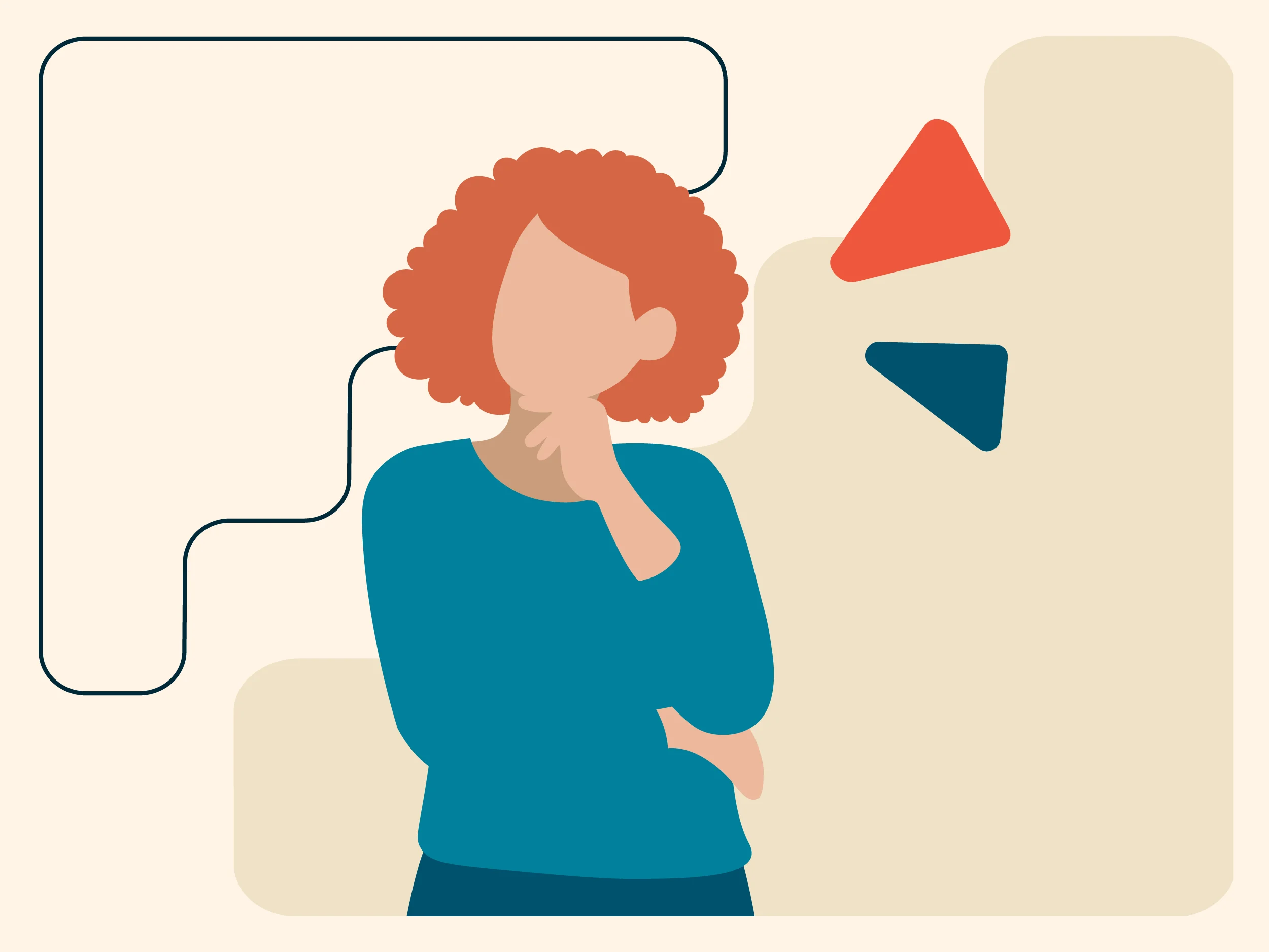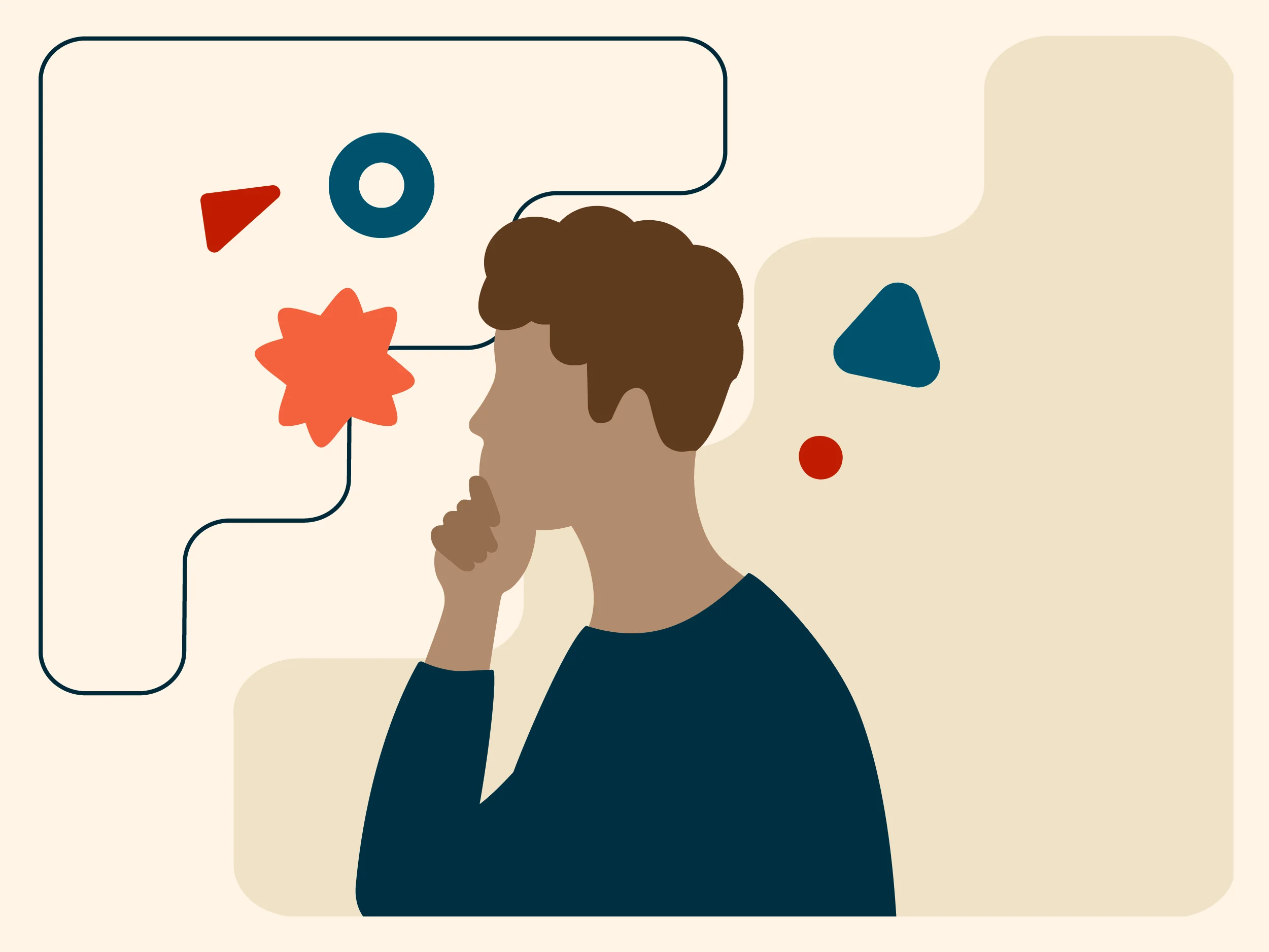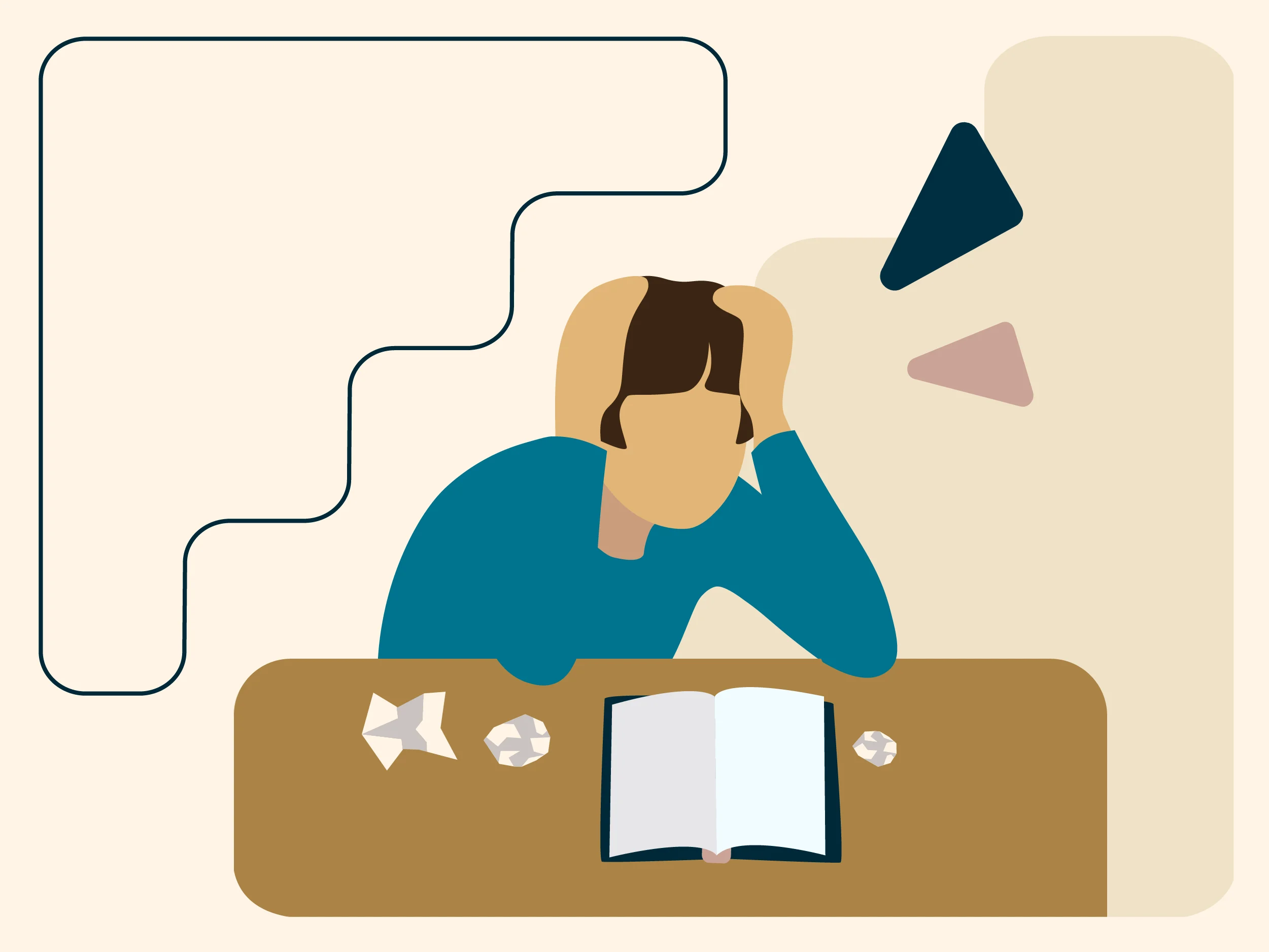IEPs: How to prepare for IEP meetings
Watch the episode, listen to the audio, or read the transcript.
Stay in the know
All our latest podcasts delivered right to your inbox.
So you have an IEP meeting coming up, or you’d like to prepare for future ones. This is an important time to ask questions and advocate for what you think is best for your child.
These meetings can be stressful and high-pressure for families. But knowing what to expect in the meeting and how to get ready can put you at ease.
On this episode of Understood Explains, host Juliana Urtubey will go over the nuts and bolts of preparing to talk about your child’s IEP, or Individualized Education Program.
Timestamps
[01:13] What’s the purpose of an IEP meeting?
[03:04] What happens in IEP meetings?
[05:48] What role do parents play in IEP meetings?
[07:20] Who can parents bring to the meeting?
[10:18] What else can parents do to get ready?
[12:39] Key takeaways
Related resources
How to organize your child’s IEP binder(article with video and downloads)
Episode transcript
Juliana: So, you've got an IEP meeting coming up. This is an important time to ask questions and advocate for what you think is best for your child. And I'm going to tell you how to get ready for it. In this episode, we're preparing for IEP meetings.
From the Understood Podcast Network, this is "Understood Explains IEPs." My name is Juliana Urtubey and I'm the 2021 National Teacher of the Year. I'm also an expert in special education for multilingual learners, and I'm your host for this season of "Understood Explains," which is available in English y en español.
Quick note, because there's so much to say about IEP meetings, we're splitting this topic into a few episodes. Right now, we're focusing on the nuts and bolts of how to get ready, like who and what to bring with you, and other key things to know.
Our next episode dives deep into how you can help set annual goals, which is a really important part of IEP meetings. And later this season, we'll talk about how to prepare for the emotional side of an IEP meeting, and what to do if you disagree with the school. OK, onto the show.
[01:13] What’s the purpose of an IEP meeting?
What's the purpose of an IEP meeting? Before we get into tips on how to prepare for IEP meetings, I want to go over the basics, like what happens at these meetings and what your role is as a parent or guardian. The purpose of an IEP meeting is for you and the school to come together and develop your child's IEP or Individualized Education Program. This meeting is where you'll map out your child's special education for the year.
As a team, you'll set annual goals based on your child's strengths and needs, and you'll also decide which services and supports the school will provide to help your child meet those goals. And the big picture goal is helping your child meet the standards for the grade they're in. So, for example, if your child is in third grade, the IEP goals will help them make progress towards meeting third-grade standards. But it's OK if it takes more than a year for them to catch up.
Now, I know a lot of families can feel overwhelmed because they think their child is so far behind. But special educators like me are really good at something called Backwards Planning. We look at where we want your child to be a year from now, and then we plan backwards to reach those goals in this amount of time. And I'll get into more details about this in a minute. But first, I want to acknowledge that IEP meetings can be stressful for parents.
That's why many special educators try to meet with families before the IEP meeting. We try to explain what's happening and answer questions in a more relaxed setting. So, I encourage you to talk to an ally. Maybe it's your child special education teacher or the school's parent liaison. And during the IEP meeting, you can always stop and ask them to explain things.
Remember, you have the right to understand what's happening. And if you want to learn more about your rights and special education, go back and listen to the previous episode.
[03:04] What happens in IEP meetings?
What happens in IEP meetings? So let's start with how often these meetings need to happen. By law, the IEP team needs to meet at least once each calendar year. The team can meet more often than that.
For example, if the team wants to change your child's IEP, it has to have a meeting first. And as a parent or guardian, you can request a meeting if there's something that you want to discuss with the team. But no matter who requested the meeting, the team needs to give you an opportunity to attend.
This means giving you advance notice of the IEP meeting. It also means rescheduling if you explain why you can't be there. But if you don't respond at all, the team can meet without you. IEP meetings tend to take about an hour and you can attend by phone or video. But in my experience, it's better if everyone is in the same room. Being there in person can make it easier for the team to notice if you might be confused or need emotional support.
Once you agree on a time to meet, the school will send you a letter or email confirming the meeting time and detailing what will be discussed. This is what's called Prior Written Notice, and it's required by law. Also, if your child just had an evaluation or a re-evaluation, the team needs to give you a copy of the evaluation report. And if the team already has drafted parts of your child's IEP, they should give you a copy as well.
The school should send you these documents at least a few days before the meeting. But if the team doesn't do this, you can call your IEP case manager or the school's parent liaison to ask for a preview. Looking over these documents before the meeting can help you identify the questions you want to ask, or the suggestions you want to make on how to help your child.
OK, so what happens during the meeting? The IEP team will discuss your child's present level of performance or PLOP. This is the jargony phrase for how your child is doing in terms of academics. The team will also look at your child's social and emotional development. And if your child's learning English as an additional language, the team will talk about your child's present level of language acquisition.
The team will talk about your child's strengths and interests too, and how these can help your child make progress at school. You can help by sharing strengths you see at home, like maybe your child keeps their room organized or helps with younger siblings. Another big part of the meeting is setting annual goals. This is where you'll get into details like how often or how intensive your child's services will be.
Does your child need to meet with a specialist once a day in a small group, or maybe twice a week, one-on-one? There's a lot more I want to say about this, so I hope you'll join me for the next episode, which is all about how you can help set the annual goals in your child's IEP.
[05:48] What role do parents play in IEP meetings?
OK, so we've talked about the basics of what happens in an IEP meeting. Now, I want to talk about your role in these meetings.
As a parent or guardian, you're an equal member of the team that develops your child's IEP. You not only have a right to participate in these meetings, but you are the person who needs to sign off on the plan. The school can't start providing special education services until you agree in writing that you're OK with the plan. So, you're definitely a key player, and it's OK if you don't know a lot about teaching or curriculum.
The teachers will help with that. You're an expert when it comes to your child. And here are three things you can do at the meeting to help the team help your child. You can ask questions, and keep asking until you understand what the school is recommending and why. You can share observations. For example, maybe you've noticed that your child has a hard time retelling stories or has trouble following directions that involve more than one step, like "Take out the trash and put away your shoes."
You can also make suggestions about what you think your child needs, like maybe less math homework if it's a nightly battle. What you say at the meeting can help the specialists think about how to shape your child's IEP. And last but not least, I want you to know that you don't have to sign the IEP during the meeting. You can have more time to think about it. You can even request another meeting to keep talking about it. So don't feel pressured to sign right away.
[07:20] Who can parents bring to the meeting?
One way to get ready for an IEP meeting is to think about who to bring with you. But first, I want to quickly mention who has to be at the meeting. The IEP team has to include at least one special education teacher and one general education teacher. There will also be a school psychologist or some other type of expert who could interpret evaluation reports and progress data. If your child is learning English, someone will be at the meeting who can connect your child's IEP goals and language acquisition goals.
Oftentimes, this will be the person who teaches what some schools call English as a Second Language or ESL. And speaking of languages, if you need a translator at the IEP meeting, the school needs to provide one for you. It's OK to request an interpreter if you aren't 100% comfortable in English. Just be sure to tell the school in advance so that they can arrange it.
And last but not least, the IEP meeting needs to include an administrator who has the power to approve school resources for your child. OK, so we've been talking about who must be at the IEP meeting. But you can also bring other people if you want to. For example, you may want a friend or family member to take notes and provide emotional support. And if this person knows your child well, that's even better.
I remember one great IEP meeting for a student named Joaquin. He was on the autism spectrum. His mom brought his older sister because she took care of Joaquin after school. And in the meeting, she shared some things that helped motivate him, plus some strategies that helped calm him down in stressful situations. I immediately started using these strategies at school, and this led to a huge difference in the way Joaquin connected to others and regulated his emotions. And most importantly, he started to love coming to school.
Another person you can bring to the IEP meetings is a parent advocate. This is typically someone you hire. A lot of parent advocates have either worked at a school or have a child who has an IEP, so they know how the system works. If you're thinking of getting an advocate, Understood has some good questions to ask before you hire someone. I'll put a link in the show notes.
And there's one other person I want you to think about bringing to the IEP meeting. And that's your child. By law, IEP teams need to include teens when they reach a certain age. But kids can get involved before then, too. The IEP meeting can be a great opportunity for kids to practice self-advocacy. Kids can stay for part or all of the meeting. I had some of my fourth and fifth graders come for the present-levels discussion.
They share their own data, and they'd also talk about which accommodations they think would be helpful to include in their IEP. Most of my students would leave after that. I'll include a link to an Understood article that can help you think about bringing your child. And there's one more thing I want to say about bringing people to the IEP meeting. Let the team know ahead of time. Send a quick email with their names and what their relationship is to you. This can help the team think about how to involve them in the meeting.
[10:18] What else can parents do to get ready?
So what else can parents do to get ready for IEP meetings? I have five main tips for you. Tip number one, brainstorm with your child. Talk about what is and isn't working with their IEP and with school in general. You may be surprised at how insightful your child can be. One thing in particular you might want to ask about is accommodations.
For example, is your child reluctant to use any of the accommodations that are in the IEP? These kinds of details are helpful to share with a team. OK. Tip number two, reflect on your child's progress. Look at your child's recent report cards, homework, behavior, incident reports, etc. Where are you seeing signs of progress? What are your biggest areas of concern?
And by the way, Understood has some great resources to help you organize all this information in a three-ring binder that you can take to the meeting. There's an awesome how-to video, as well as some printables that you can use in your IEP binder. I'll put a link in the show notes. Tip number three, write down your questions so you don't forget any of them during the meeting, and put the questions in order so you can ask the most important ones first.
And here's one question you might want to ask. In the meeting, the team will talk about how often your child will receive services and where they'll receive these services. But this can be hard for a lot of families to visualize. So you might want to ask, what will a typical school day look like for my child? Tip number four, prioritize your goals for the meeting. And I'm not necessarily talking about the annual goals in your child's IEP.
Think about what you want for your child's school experience. Make a list of 3 to 5 things that are really important to you and your child. Here's an example. Let's say your child needs speech therapy. And let's say art class is the only thing that gets your child out of bed in the morning. You need to explain this to the IEP team, so that they'll try to avoid pulling your child out of art class to go to speech therapy.
Tip number five, when you go to the IEP meeting, try to keep an open mind. If someone brings up an issue or solution you're not sure of, hear them out. Sometimes challenges come up in school that you don't see at home, but if you and the school work together, you can figure out how to support your child's needs.
[12:39] Key takeaways
Before we go, let's wrap up with three key takeaways.
First, the purpose of the IEP meeting is to map out your child's special education for the year. Second, you're an equal member of the IEP team, and you can bring a friend or family member or parent advocate to help you during the meeting. And lastly, you can get ready by brainstorming with your child, writing down questions, and prioritizing your goals. I want to give one more plug for creating an IEP binder.
It can help you get organized for the IEP meetings and stay organized throughout the year, and Understood has free resources to help you put it all together. I'll include a link in the show notes, where you can also find more tips to help you navigate IEP meetings. All right, that's it for this episode of "Understood Explains." Next time, we'll talk about how you can help set annual goals and monitor your child's progress.
You've been listening to "Understood Explains IEPs." This season was developed in partnership with UnidosUS, which is the nation's largest Hispanic civil rights and advocacy organization. Gracias, Unidos!
If you want to learn more about the topics we covered today, check out the show notes for this episode. We include more resources as well as links to anything we've mentioned in the episode. Understood is a nonprofit organization dedicated to helping people who learn and think differently discover their potential and thrive. Learn more at understood.org/mission.
Credits
Understood Explains IEPs was produced by Julie Rawe and Cody Nelson, with editing support by Daniella Tello-Garzon.
Video was produced by Calvin Knie and Christoph Manuel, with support from Denver Milord.
Mixing and music by Justin D. Wright.
Ilana Millner was our production director. Margie DeSantis provided editorial support, and Whitney Reynolds was our web producer.
For the Understood Podcast Network, Laura Key is our editorial director, Scott Cocchiere is our creative director, and Seth Melnick is our executive producer.
Special thanks to the team of expert advisors who helped shape this season: Shivohn Garcia, Claudia Rinaldi, and Julian Saavedra.
Host

Juliana Urtubey, NBCT, MA
is the 2021 National Teacher of the Year. As a special educator, she believes all kids have a right to be included and celebrated in what she calls a “joyous and just education.”
Latest episodes
Tell us what interests you
Stay in the know
All our latest podcasts delivered right to your inbox.









